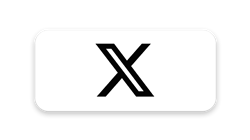Brand safety is critical to effective social media advertising. While great ads can drive attention to your brand, they can also set you up for failure—unless you learn to navigate the ins and outs of ad placement and timing. Ad teams spend months researching target audiences, strategizing messages, and crafting the perfect ads, but that tireless effort is ruined in an instant if an ad is poorly placed. Staying vigilant about brand safety can help launch your brand forward rather than hold it back.
What is brand safety?
 Brand safety encompasses all the preventative measures taken to protect a brand’s reputation by ensuring that ads appear in appropriate and safe placements. This includes avoiding associations with harmful, offensive, or inappropriate content, which can lead to adverse consequences, tarnish brand image, and alienate target audiences. Successful brand safety requires looking at advertising through a public relations lens and understanding which digital spaces should be avoided and which will pay dividends.
Brand safety encompasses all the preventative measures taken to protect a brand’s reputation by ensuring that ads appear in appropriate and safe placements. This includes avoiding associations with harmful, offensive, or inappropriate content, which can lead to adverse consequences, tarnish brand image, and alienate target audiences. Successful brand safety requires looking at advertising through a public relations lens and understanding which digital spaces should be avoided and which will pay dividends.
Why does ad placement and brand safety matter?
In January 2020, Planters Peanuts ran an advertising campaign with a brow-raising storyline: their beloved 104-year-old mascot, Mr. Peanut, died in an automobile accident. While the edgy Mr. Peanut ad garnered mixed reactions, it did hit viral status and many brands responded and played along—that is, until the ad began running alongside the real and unexpected news that basketball icon Kobe Bryant and his 13-year-old daughter, Gigi, had passed away.
Planter quickly halted the campaign and paused paid advertising on social channels, but the damage was done. Poor ad placement, though unforeseen and accidental in this case, posed a real risk to Planters’ brand safety. While no one can anticipate every ad placement issue that might arise, careless decision-making can certainly be avoided. Delivering thoughtfully placed ad content builds consumer trust and creates a felt sense of safety and consistency that fosters long-term consumer/brand relationships.
Smart ad placement also enhances your ads’ effectiveness. By placing ads alongside relevant, appropriate content, it is more likely to be seen and engaged with by receptive audiences. All of these measures help move consumers further down the sales funnel to help your ads make a greater impact and deliver a higher ROI (Return on Investment).
What are the challenges of brand safety?
Protecting brand safety can be tricky when buying ad spaces programmatically on social media. Though programmatic advertising does free up time and effort and increases target audience reach more efficiently, it also runs the risk of disastrous ad placement. Because programmatic works through a real-time, auction-based system, it can reach audiences with great precision, but it can also pose potential risks. The primary challenges of programmatic advertising and brand safety include:
-
Ad placement precision. Your ad should be visible, but strategically displayed in places that align with your brand values, image, and long-term mission. Don’t risk spending years building a positive image only to have it ruined in a few short hours.
-
Word ambiguity. While its prudent to keep your ads away from questionable content, keyword blocklists that are too broad or not regularly re-evaluated can inadvertently flag neutral or even positive content when keywords have multiple meanings. For example, the keyword “shot” could refer to violence, but it can also reference photography, sports, or vaccinations.
-
Misinformation and disinformation. Your ads might inadvertently display on unreliable platforms that spread inaccurate information, causing consumers to associate your brand with those unreliable sites.
-
Extremist content. Programmatic ads run the risk of appearing around extremist or hate-driven online content.
-
Ad fraud threats. Ad fraud, driven by bots and fraudulent websites, can lead to wasted ad spending and jeopardize brand image. liCurrent events. Programmatic ads risk insensitivity to news and current events. For example, during the Covid-19 pandemic, ads for hand sanitizer made sense, while ads for travel agencies felt tasteless.
How can I ensure social media brand safety for my business?
Risk mitigation is the name of the game, and the good news is, there are multiple, effective ways to protect your brand safety on social media. Rather than advertise in fear, you can leverage technology and online tools to make sure your brand is protected.
Some social platforms offer safety settings for paid content so you can more easily protect your brand’s reputation, and a few demand-side platforms like Adelphic offer tools to keep your ads from being displayed on undesirable sites. Let’s examine exactly how social media content monitoring, alongside proactive ad strategies, can safeguard your brand’s reputation and integrity.
Meta: Facebook + Instagram
 As the world’s leading social media hub, Meta offers a variety of features to protect your brand across its platforms. You can begin by accessing the monitoring controls for your campaigns in Ad Manager. Control your account through the Meta Brand Safety and Suitability Hub, which allows you to adjust which types of content are a good fit for your brand. In addition, you can apply inventory filters to manage risk for ads in Inventory filters work differently for each content type. Choose from three inventory filter levels—full, standard, or limited—and apply the one you need for each type of content you post, from feeds, in-stream videos, reels and on the Meta Audience network.
As the world’s leading social media hub, Meta offers a variety of features to protect your brand across its platforms. You can begin by accessing the monitoring controls for your campaigns in Ad Manager. Control your account through the Meta Brand Safety and Suitability Hub, which allows you to adjust which types of content are a good fit for your brand. In addition, you can apply inventory filters to manage risk for ads in Inventory filters work differently for each content type. Choose from three inventory filter levels—full, standard, or limited—and apply the one you need for each type of content you post, from feeds, in-stream videos, reels and on the Meta Audience network.
Brands can also utilize block lists to keep their ads from appearing in certain Instagram profile feeds, on specific third-party sites or alongside certain Facebook reels and videos. To create a block list, upload a list of Facebook pages, Instagram profiles, or third-party URLs that your brand wants to block. Each list can include up to 10,000 URLs.
Topic exclusions are another way to keep your ad content from appearing before, during or after disparaging or unpleasant organic content. Within the Brand Safety and Suitability Hub, you can prevent your in-stream video ads from being displayed alongside certain topics. Lastly, Meta allows brands to create content type exclusions to stop your ads from appearing next to live videos, in-stream videos, or Facebook Reels about specific topics.
|
|
LinkedIn offers fewer reputation management controls compared to other social media platforms, but it does feature a Campaign Manager where advertisers can access controls for ads that display on the LinkedIn Audience Network. Through Campaign Manager, you can exclude categories and upload a publisher list to block up to 100,000 domains and app store URLs. |
|
TikTok |
This viral social platform offers a Content Exclusions panel that uses inventory filters to help advertisers avoid placing content adjacent to potentially risky videos. Content Exclusions can be found within the TikTok Ads Manager and features three inventory filters: full, standard, and limited. |
Twitter / X
 Twitter / X brand safety settings only apply to individual campaigns, so you will need to adjust them accordingly. Each time you run a new Pre-Roll in-stream ad on Twitter, you can choose an exclusive list of approved publishers. You can also use placement controls to opt in and out of home timelines, profiles, search results and replies. Twitter / X also offers exclusion lists, which can be configured in Account Brand Safety Control settings. Enter or upload lists of accounts or keywords that you don’t want your online reputation to be associated with. Finally, the social channel enables Twitter Audience Platform as another brand safeguard, which allows you to create campaigns through the unique targeting of various Twitter audiences.
Twitter / X brand safety settings only apply to individual campaigns, so you will need to adjust them accordingly. Each time you run a new Pre-Roll in-stream ad on Twitter, you can choose an exclusive list of approved publishers. You can also use placement controls to opt in and out of home timelines, profiles, search results and replies. Twitter / X also offers exclusion lists, which can be configured in Account Brand Safety Control settings. Enter or upload lists of accounts or keywords that you don’t want your online reputation to be associated with. Finally, the social channel enables Twitter Audience Platform as another brand safeguard, which allows you to create campaigns through the unique targeting of various Twitter audiences.
YouTube
 When placing ads on YouTube, Google Ads applies review management settings at the account level in the Content Suitability panel. Choose from three inventory types: expanded, standard or limited, to exclude certain audiences, content, YouTube channels and videos from your campaigns. You can also check potential reputation score issues to inform your exclusion lists.
When placing ads on YouTube, Google Ads applies review management settings at the account level in the Content Suitability panel. Choose from three inventory types: expanded, standard or limited, to exclude certain audiences, content, YouTube channels and videos from your campaigns. You can also check potential reputation score issues to inform your exclusion lists.
Monitoring brand safety is a sizeable job, but with the right tools and guidance, your brand can successfully navigate ad placement and maintain a positive brand reputation. At (amp), we buy and amplify media, but we also make sure it reaches the right audience at the right time. We protect your brand safety by ensuring your ad content reaches, resonates with and engages audiences within thoughtful, relevant spaces. For help safeguarding your brand safety on social media, reach out to the (amp) team today.


